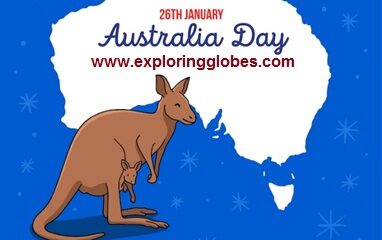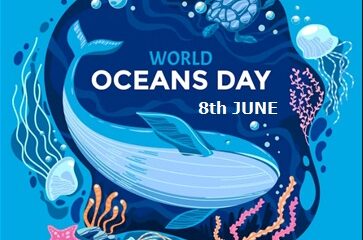ASIA
All You Need to Know About Continents : ASIA

Facts about Asia:
1. Asia is the world’s biggest and generally crowded landmass of the seven mainlands in size and populace. It has 30% of world land region and makes up more than 60% of the worldwide populace.
2. Asia covers 33% of earth’s surface.
3. Asia saw the introduction of two extraordinary antiquated civic establishments – Harappa human advancement and Chinese development.
4. This implies a great many people on our Earth live on the Asian mainland. A few early human civilizations began in Asia.
5. The religions of Hinduism, Islam, Buddhism, and Christianity initially started in Asia.
6. It contains the world’s biggest nation, Russia, and the world’s two most crowded nations, China and India.
7. The two biggest economies in Asia that add to worldwide Gross domestic product are China and India.
8. Asia is home to some of the world’s wealthiest countries.
9. Qatar, a tiny country on the Arabian Peninsula, is one of the wealthiest countries in the world due to revenue from oil exploration and the petroleum industry.
10. Saudi Arabia, the United Arab Emirates, and Bahrain are also among the world’s richest countries due to their oil reserves.
11. Asia is the largest of the five continents in terms of both land area and population.
12. Asia is traditionally defined as the eastern part of the Eurasian landmass, Japan, and the island nations of Maritime Southeast Asia.
13. The continent is almost entirely located north of the equator, with the exception of a few islands in Southeast Asia. The Suez Canal and its borders connect Asia and Africa.
14. Asia has the most languages spoken, with over 2,300.
15. Asia is home to the highest point on the planet, Mount Everest, which stands 29,028 feet (8,848 metres) tall.
16. The continent is home to ten of the world’s highest peaks.
17. The only man-made structure visible from space is China’s Great Wall.
18. Asia’s major animals include reticulated pythons, tigers, pandas, yaks, and Indian rhinoceroses.

Credit – Freepik
Area
Asia covers approximately 49.7 million km2 (19,189,277 square miles), accounting for approximately 30% of the Earth’s total land area.
How many Asian countries are there?
It is shared by 50 countries.
Russia is by far the largest country in terms of area, with over 17 million km2, 13 million km2 (77%) of which is in Asia.
China is the second-largest Asian country, with an area of 9.6 million km2.
The Maldives is Asia’s smallest independent state, covering only 298 square kilometers.
Take a look at all of Asia’s countries and capitals:
| SL.No. | Asian-Country | Capital | Currency |
| 1 | Afghanistan | Kabul | Afghani |
| 2 | Armenia | Yerevan | Armenian Dram |
| 3 | Azerbaijan | Baku | Azerbaijani Manat |
| 4 | Bahrain | Manama | Bahraini Dinar |
| 5 | Bangladesh | Dhaka | Taka |
| 6 | Bhutan | Thimpu | Ngultrum |
| 7 | Brunei | BandarSeri Begawan | Brunei Dollar |
| 8 | Cambodia | Phnom Penh | Cambodian Riel |
| 9 | China | Beijing | Chinese Renminbi |
| 10 | Cyprus | Nicosia | Euro |
| 11 | Georgia | Tbilisi | Georgian Lari |
| 12 | India | New Delhi | Indian Rupee |
| 13 | Indonesia | Jakarta | Indonesian Rupiah |
| 14 | Iran | Tehran | Iranian Rial |
| 15 | Iraq | Baghdad | Iraqi Dinar |
| 16 | Israel | Jerusalem | Israeli New Shekel |
| 17 | Japan | Tokyo | Japanese Yen |
| 18 | Jordan | Amman | Jordanian Dinar |
| 19 | Kazakhstan | Astana | Tenge |
| 20 | Korea, North | Pyongyang | North Korean Won |
| 21 | Korea, South | Seoul | South Korean Won |
| 22 | Kuwait | Kuwait City | Kuwaiti Dinar |
| 23 | Kyrgyzstan | Bishkek | Kyrgyzstani Som |
| 24 | Laos | Vientiane | Lao Kip |
| 25 | Lebanon | Beirut | Lebanese Pound |
| 26 | Malaysia | Kuala Lumpur | Malaysian Ringgit |
| 27 | Maldives | Male (Maale) | Maldivian Rufiyaa |
| 28 | Mongolia | Ulaanbaatar | Mongolian Tugrik |
| 29 | Myanmar (Burma) | Nay Pyi Taw | Burmese Kyat |
| 30 | Nepal | Kathmandu | Nepalese Rupee |
| 31 | Oman | Muscat | Omani Rial |
| 32 | Pakistan | Islamabad | Pakistan Rupee |
| 33 | Palestine | East Jerusalem | Palestine Pound |
| 34 | Philippines | Manila | Philippine Peso |
| 35 | Qatar | Doha | Qatari Rial |
| 36 | RussianFederation (Russia) | Moscow | Russian Ruble (Ruble) |
| 37 | Saudi Arabia | Riyadh | Saudi Riyal |
| 38 | Singapore | Singapore | Singapore Dollar |
| 39 | Sri Lanka | Sri Jayawardenepura Kotte Colombo in past | Sri Lankan Rupee |
| 40 | Syria | Damascus | Syrian Pound |
| 41 | Taiwan | Taipei | New Taiwan Dollar |
| 42 | Tajikistan | Dushanbe | Somoni |
| 43 | Thailand | Bangkok | Thai Baht |
| 44 | Turkey | Ankara | Turkish Lira |
| 45 | Turkmenistan | Ashgabat | Turkmenistan Manat |
| 46 | Timor-leste | Dili | US Dollar |
| 47 | United Arab Emirates | Abu Dhabi | UAE Dirham |
| 48 | Uzbekistan | Tashkent | Uzbekistani Som |
| 49 | Vietnam | Hanoi | Vietnamese Dong |
| 50 | Yemen | Sanaa | Yemeni Rial |
Myanmar’s capital was relocated from Yangon (or Rangoon) to Nay Pyi Taw in 2006. Renminbi is China’s official currency. Renminbi’s basic unit is the yuan. Renminbi means “People’s Money/Notes” in Chinese.
Asian Regions
Conventionally there are six main geographical regions or sub regions in Asia.
EASTERN ASIA, WESTERN ASIA, CENTRAL ASIA, NORTHERN ASIA, SOUTHERN ASIA, SOUTHEAST ASIA.
East Asia or Eastern Asia
East Asia, also known as Eastern Asia, refers to the eastern portion of the Asian continent as well as the island nation of Japan.
The United Nations geoscheme includes five sovereign countries, plus the Chinese Special Administrative Regions of Hong Kong and Macao, as well as the Republic of China (Taiwan), all of which have an uncertain political status.
| EASTERN ASIA | COUNTRIES | CAPITAL |
| 1 | China | Beijing |
| 2 | China, Macao SAR | Macao City |
| 3 | Japan | Tokyo |
| 4 | Korea (North) | Pyongyang |
| 5 | Korea (South) | Seoul |
| 6 | Mongolia | Ulaanbaatar |
| 7 | Taiwan | Taipei |
Western Asia
Western Asia refers to the western part of Asia, which includes the Arabian Peninsula and the majority of Middle Eastern countries.
Western Asia is made up of 19 countries (the United Nations geoscheme lists only eighteen). Except for Armenia, Georgia, Israel, and the Republic of Cyprus, all of these countries have a Muslim majority.
| 1 | Armenia | Yerevan |
| 2 | Azerbaijan | Baku |
| 3 | Bahrain | Manama |
| 4 | Cyprus | Nicosia(Lefkosia) |
| 5 | Georgia | T’bilisi |
| 6 | Iran | Tehran |
| 7 | Iraq | Baghdad |
| 8 | Israel | Jerusalem(claimed) |
| 9 | Jordan | Amman |
| 10 | Kuwait | Kuwait(City) |
| 11 | Lebanon | Beirut |
| 12 | Oman | Muscat |
| 13 | Qatar | Doha(Al-Dawhah) |
| 14 | Saudi Arabia | Riyadh |
| 15 | State of Palestine | Jerusalem(claimed) |
| 16 | Syria | Damascus |
| 17 | Turkey | Ankara |
| 18 | United Arab Emirates | Abu Dhabi |
| 19 | Yemen | Sanaa |
Central Asia
Central Asia is an Asian region located between the Caspian Sea and Western China. Afghanistan, Kazakhstan, Kyrgyzstan, Tajikistan, Turkmenistan, and Uzbekistan are all predominantly Muslim countries that were all former Soviet republics, with the exception of Afghanistan.
| Central Asia | Countries | Capital |
| 1 | Afghanistan | Kabul |
| 2 | Kazakhstan | Nur-sultan |
| 3 | Kyrgyzstan | Bishkek |
| 4 | Tajikistan | Dushanbe |
| 5 | Turkmenistan | Ashgabat |
| 6 | Uzbekistan | Tashkent |
Northern Asia refers to the vast region of northern Asia east of the Ural Mountains, also known as Siberia. The region is divided into Russia’s Ural, Siberian, and Russian Far Eastern federal districts. The Arctic Ocean borders the 13 million km2 (5.1 million sq mi) area to the north, European Russia to the west, and the Bering Sea to the east. From the south, Kazakhstan, Mongolia, and China form an international border with Siberia.
| North Asia Countries | Capital |
| Russia (Siberia) | Moscow |
South Asia or Southern Asia
The southern part of Central Asia is referred to as Southern Asia. The region is bounded to the south by the Indian Ocean and to the north by the Himalayas. Southern Asia is home to eight sovereign countries. Afghanistan is included in the United Nations geoscheme for Southern Asia.
| South Asia Countries | Capital | |
| 1 | Bangladesh | Dhaka |
| 2 | Bhutan | Thimphu |
| 3 | India | New-Delhi |
| 4 | Maldives | Male |
| 5 | Nepal | Kathmandu |
| 6 | Pakistan | Islamabad |
| 7 | Srilanka | Colombo |
Southeast Asia
Southeast Asia refers to the region of Asia that includes the Indochinese Peninsula and the Maritime Southeast Asian nations. The region is located in the continent’s southeast, south of China, east of India, and north of Australia.
| Southeast Asia Countries | Capital |
| Brunei Darussalam | Bandar Seri Begawan |
| Cambodia | Phnom Penh |
| Indonesia | Jakarta |
| Lao Pdr | Vientiane |
| Malaysia | Kualalumpur |
| Myanmar (Burma) | Naypyidaw, Yangon |
| Philippines | Manila |
| Singapore | Singapore |
| Thailand | Bangkok |
| Timor-Leste (East Timor) | Dili |
| Vietnam | Hanoi |
Other facts about Asia
Highest Point:
Sagarmatha (Chomolungma: also known as Mount Everest) 8,848m (29,028 ft). The Himalayas’ Mahalangur Himal section contains the highest mountain on the planet. Its summit is crossed by the border between China and Nepal.
Largest Lakes:
Caspian Sea (a landlocked salt lake) 371,000 km2 (143,250 sq mi), Lake Baikal (Ozero Baykal) in Siberia (Russia) 31,722 km2, is the world’s largest freshwater lake by volume (23,615 km3).
Rivers with the longest lengths:
The Yangtze River (or Chang Jiang) in China is Asia’s longest river, stretching 6,380 kilometers (3,964 mi). The Yellow River (Huang He) in Eastern China is the second-longest river, stretching 5,464 kilometres (3,395 mi).
Major Geographical Regions of Asia –
Major sub-regions include the Indian subcontinent, the Indochinese Peninsula, the Maritime Southeast, the Arabian Peninsula, and the Japanese archipelago.
The Himalayas, including the Karakoram Range, the Kunlun Mountains, and the Tien Shan mountain system, the Ural Mountains in Russia, the Pamir Mountains, and the Hindu Kush in Afghanistan form the traditional border between Europe and Asia.
The Central Siberian Plateau, the Iranian Plateau, the Deccan Plateau, and the Tibetan Plateau are all plateaus.
The West Siberian Plain, the Turan Lowland, the rift basin of the North China Plain, and the Indo-Gangetic Alluvial Plain in India and eastern Pakistan are examples of lowlands.
Deserts:
The Arabian Desert on the Arabian Peninsula, with Rub’ al-Khali at its heart, the Gobi Desert in China and Mongolia, the Syrian Desert (Badia) in Western Asia, the Karakum Desert in Turkmenistan, the Kyzyl-Kum Desert in Central Asia, and the Thar Desert in India and Pakistan are Asia’s largest deserts.
Islands:
New Guinea (partly in Oceania), Borneo, Sumatra, Honshu, Sulawesi, Java, and Luzon are Asia’s largest islands.
Asian Languages:
Throughout Asia, there are over 2,000 living languages. Arabic, Bengali, Burmese, Chinese, Filipino, Hindi, Indonesian, Japanese, Korean, Malay, Russian, Thai, Turkic, Urdu, and Vietnamese are among the major languages.
-

 WORLD INFO3 years ago
WORLD INFO3 years agoAll You Need to Know About Continents: Facts and More
-

 AFRICA3 years ago
AFRICA3 years agoAll You Need to Know About Continents : AFRICA
-

 AUSTRALIA3 years ago
AUSTRALIA3 years agoAll You Need to Know About Continents : Australia
-

 WORLD INFO3 years ago
WORLD INFO3 years agoThe World’s Oceans
-

 AMERICAS3 years ago
AMERICAS3 years agoAll You Need to Know About Continent : THE AMERICAS
-

 EUROPE3 years ago
EUROPE3 years agoAll You Need to Know About Continents : EUROPE
-

 ANTARCTICA3 years ago
ANTARCTICA3 years agoAll You Need to Know About Continents : Antarctica

